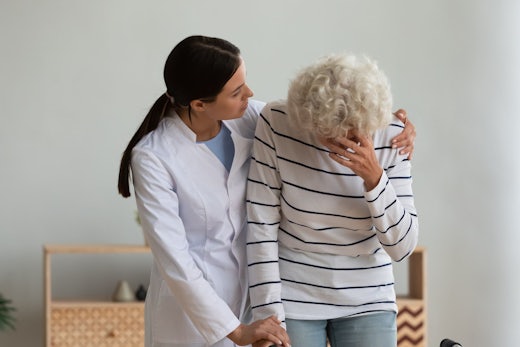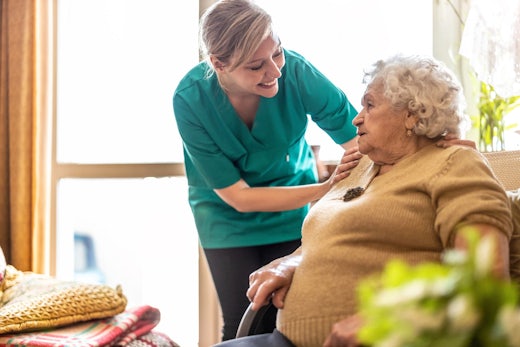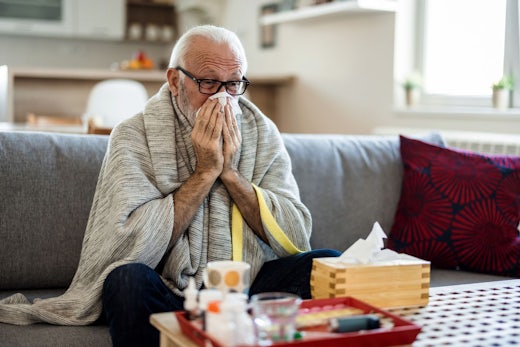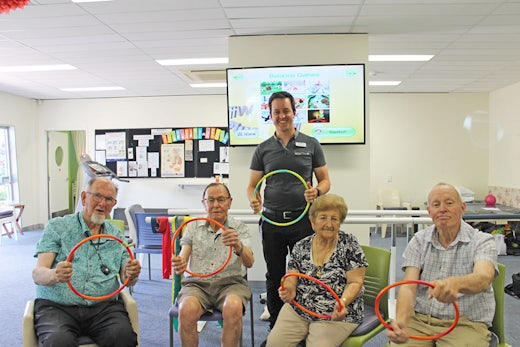Research says wellbeing of older Australians is a laughing matter
Recent research released by Victoria’s La Trobe University suggests that laughter could be the best medicine for those living in aged care – and it’s no joke.

Laughter Yoga results show benefits to elderly participants blood pressure and overall feelings of wellbeing (Source: Shutterstock)
The Laughter Yoga sessions were introduced into three Victorian aged care facilities in collaboration by La Trobe University researchers, Aged Care Services Australia, and LaughLife Wellbeing Programs and were run to include 28 residents, 13 who are living with dementia.
La Trobe University researcher, Adjunct Lecturer School of Public Health and Psychology and director of LaughLife Wellbeing Programs, Ros Ben-Moshe, who worked with lead author Julie Ellis, says the sessions were a ‘gentle exercise’ for the participants aged between 61 and 96 years old, but provided positive results.
The Laughter Yoga pilot program reported improved results across the board for all participants, particularly when it came to lowered blood pressure and feelings of wellbeing.
“When moving into or living in aged care facilities, older people can often feel very stressed or isolated – even with so many others around them,” Ms Ben-Moshe says.
“For those feeling that way, laughter is a great way to improve happiness and build social connections.
“Throughout our pilot, it was very fascinating to see what the sessions did to heart rates, blood pressure and the overall wellbeing of participants.”
The sessions for the pilot ran over six weeks and were structured to include one 30 minute session once a week, with each session starting with 5 minutes of deep breathing exercise and stretching, followed by 15 minutes of simulated laugh with clapping and chanting, and ended with relaxation and smile practice as a “nice way to conclude the session”.
Blood pressure and heart rate was measured before and immediately after each laughter session and in weeks 1, 3 and 6, positive and negative effect and happiness were measured, with participating nurses and lifestyle staff from within the aged care facilities taking the individual results.
“What we were most interested in during the pilot and throughout the research was to see what the link was between anxiety and depression and what role laughter could have in alleviating that in older people,” Ms Ben-Moshe says.
“Laughter has many known health benefits including the positive impact on heart rates, stimulating the lymphatic system, blood flow, muscle work and the release of endorphins – and in this setting as well it resulted in a lot more chatter and interactivity between participants afterwards.
“From the measurements taken before and after the sessions, we were able to see improvements across the board; so it was absolutely a success especially when it came to lowered blood pressure and self-reported feelings of happiness.”
As an additional part of the program for the participating aged care facilities, training in laughter yoga was offered to the lifestyle staff.
“We ran a training program for those that wanted it so that the lifestyle staff in the participating facilities could continue to run the sessions in their own way, whether that be in the same format as what we offered, or by including it as part of pre-existing activities,” Ms Ben-Moshe says.
“I believe that laughter yoga is a good way to create more of a community in aged care facilities and it would definitely be a huge benefit to have laughter activities available at least once a week.”
The full research report ‘Laughter yoga activities for older people living in residential aged care homes: a feasible study’ by Julie Ellis, Ros Ben-Moshe and Karen Teshuva is published in The Australasian Journal of Ageing.











![The new Aged Care Act exposure draft is slated for release in December of 2023, but advocates hope to see it rolled out on January 1, 2024. [Source: Shutterstock]](https://agedcareguide-assets.imgix.net/news/articles/wp/agedcareact__0811.jpg?fm=pjpg&w=520&format=auto&q=65)












Comments